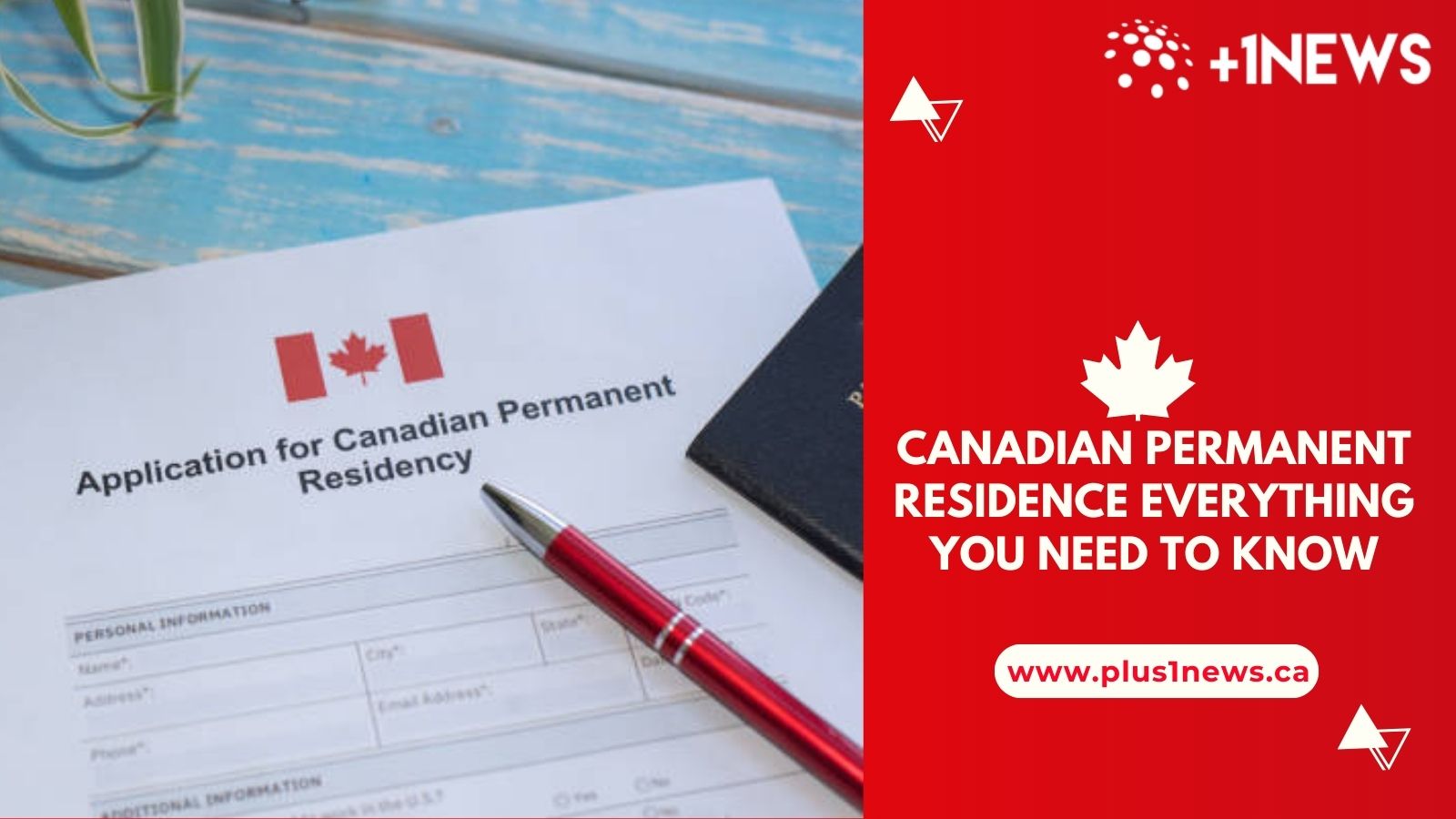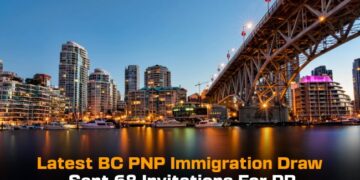Canada, known for its beautiful landscapes, multicultural society, and high standard of living, is a preferred destination for those seeking a new home. If you’re considering making Canada your permanent home, understanding the concept of Canadian Permanent Residence (PR) is vital. In this comprehensive guide, we dive deep into what it means to be a Canadian PR, the benefits, the application process, and how it serves as a pathway to Canadian citizenship.
Canadian Permanent Residence Overview:
What is Canadian Permanent Residence?
A permanent resident is an individual who has obtained permanent resident status by immigrating to Canada but is not yet a Canadian citizen. However, unlike a citizen, a Permanent Resident must meet certain requirements to maintain their status, including a residency obligation. As a PR, you can enjoy many of the same benefits that Canadian citizens do, from universal healthcare to free education for children.
Difference Between Permanent Residence and Citizenship
While the status of a Permanent Residence provides many rights similar to Canadian citizens, there are some fundamental differences:
- PRs do not have the right to vote in federal, provincial or municipal elections, cannot run for political office, or hold some jobs with high-level security clearance.
- PRs can lose their status under certain conditions, such as committing serious crimes.
- PRs must carry and present a valid PR card or permanent resident travel document (PRTD) when travelling back to Canada on a commercial vehicle.
Benefits of Canadian Permanent Residence
Being a Canadian Permanent Resident comes with a host of benefits that significantly elevate your quality of life:
- Live and Work Anywhere in Canada: As a PR, you are not tied to a specific employer or region. You can live, work, or study anywhere in Canada, providing an excellent opportunity for career and life exploration.
- Access to Universal Healthcare and Social Services: Canada’s universal healthcare is renowned worldwide. As a PR, you’re eligible for free medical care and access to social services.
- Family Sponsorship: If you wish to bring your family to Canada, PR status allows you to sponsor your spouse, common-law partner, and dependent children.
- Free Education for Children: Your children can study free up until secondary school. Post-secondary education is also significantly cheaper for PRs than for international students.
- Transition to Canadian Citizenship: PR is the first crucial step towards Canadian citizenship. After living in Canada for three out of five years, you can apply for citizenship.
- Protected Rights: As a PR, your rights are safeguarded under Canadian law and the Canadian Charter of Rights and Freedoms.
Post-Graduation Work Permit (PGWP) in Canada: The Complete Guide for International Students
How to Apply for Canadian Permanent Residence Application?
If you’re wondering how to become a Canadian Permanent Resident, the application process is quite straightforward. However, diligence and accuracy are essential to avoid delays or denials. Here’s a step-by-step guide to help you understand the process better:
Step 1: Fill Out the Online Application: Start by completing the online application form for permanent residence. Be honest and precise with your answers.
Step 2: Upload Required Documents: Scan and upload all the necessary documents as per the checklist. Make sure the scans are clear and legible.
Step 3: Pay the Required Fees: Once you’ve uploaded your documents, you need to pay your processing fee and the biometrics fee.
Step 4: Submit Your Application: After completing the form and paying the fees, you can submit your application. Make sure everything is correct and complete; the system won’t let you submit otherwise.
Step 5: Provide Biometrics: Most applicants will need to provide biometrics (fingerprints and a photo) after applying.
Step 6: Check Your Application Status Regularly: You can track the status of your application online. Regularly checking your status ensures that you’re on top of any updates or additional steps.
What Happens After You Apply for Permanent Residence?
Once you’ve submitted your application, a few key steps follow:
- Application Verification: Your application will be reviewed to ensure it’s complete, the processing fee is paid, and all the requirements are met.
- Communication: You’ll receive notifications in your online account about biometrics, application review confirmation, additional document requests, interview setup, and more.
About the Permanent Residence Card and Travel Document
As a PR, you’re eligible to apply for a Canadian Permanent Resident Card (PR card), which you can use for travel in and out of Canada. It’s valid for five years, but sometimes PR cards are only valid for one year. Always keep track of your card’s expiry date and apply for renewal six months before it expires.
If you’re outside Canada and wish to return, but don’t have a valid PR card, you may apply for a Permanent Resident Travel Document (PRTD). This single-entry document lets you enter Canada, where you can then apply for a PR card or renewal.
Related Articles:
- What is COPR and what to do after receiving it?
- Canada Expands Visa-Free Travel Program for 13 Countries: Exciting Announcement by IRCC Minister
What is Residency Obligation?
To maintain PR status, you must live in Canada for at least 730 days during the last five years. This is known as the Residency Obligation. Exceptions to this rule are if you’re accompanying a Canadian citizen outside Canada or working for a Canadian business or the public service overseas.
Transitioning from Permanent Resident to Canadian Citizen
After residing in Canada for three out of five years, you’re eligible to become a citizen. You can apply for Canadian citizenship. This process involves passing a citizenship test, proving language proficiency in English or French, and meeting other requirements. Becoming a citizen brings additional benefits, like the right to vote and apply for a Canadian passport.
Can You Lose Your Permanent Resident Status?
Yes, PR status can be revoked for serious criminality, misrepresentation, or failure to meet the residency obligation. It’s crucial to fulfill your requirements as a PR to avoid this scenario.
Renouncing Permanent Residence
If you wish to renounce your PR status, you can apply to voluntarily give it up. This might be helpful if you know you haven’t met your residency obligation and plan to travel to Canada.
By understanding your rights, obligations, and the process, you can make your dream of living in Canada come true. Always stay updated with the latest immigration rules and regulations to maintain your status and reap the benefits of being a Canadian PR.
Frequently Asked Questions:
Q.1 What is a Canadian Permanent Resident (PR)?
A Canadian PR is someone who has been granted the right to live and work anywhere in Canada without being a citizen. PRs have access to many benefits such as universal healthcare, free education for children, and the ability to sponsor family members.
Q.2 How can I apply for Permanent Residency in Canada?
You can apply for PR status through various immigration pathways such as Express Entry, economic immigration, business immigration, family sponsorship, or refugee/humanitarian programs. The application process includes filling out an online form, uploading necessary documents, paying the application and biometrics fees, and submitting the application.
Latest Express Entry Draw Result- June 8, 2023
Q.3 What are the benefits of having Canadian PR status?
PR status allows you to live and work anywhere in Canada. Other benefits include access to universal healthcare and social services, the ability to sponsor family members to join you, free education for your children, and the potential to transition to Canadian citizenship after three years.
Q.4 How do I maintain my Permanent Residence status?
To maintain your PR status, you must live in Canada for at least 730 days within five years or meet certain exceptions. You should also renew your PR card, typically valid for five years, six months before it expires.
Q.5 What is a Permanent Resident Card?
A PR card is a document that shows your PR status in Canada. You can use it to travel in and out of Canada.
Q.6 Can I become a Canadian citizen as a Permanent Resident?
Yes, after residing in Canada for three out of five years, PRs can apply to become Canadian citizens. Becoming a citizen allows you to vote, apply for a Canadian passport, and frees you from renewing your PR status.
Q.7 Can my Canadian Permanent Residence status be revoked?
Yes, the Canadian government can revoke your PR status due to serious criminality, misrepresentation in obtaining PR status, or if you fail to meet your residency obligations.
Q.8 What happens if my PR application is rejected or refused?
If your application is rejected, you can reapply for future rounds of invitations. You’ll have to submit a new Express Entry profile and meet the eligibility criteria to be accepted into the pool again.
Q.9 How can I check the status of my Permanent Residence application?
After submitting your PR application, you can check its status online using your account. The system provides updates on the overall status of your application and the status of each application step.
Q.10 What is the processing time for a Canadian Permanent Residence application?
Most Express Entry applications are processed within 6 months or less once a complete application is received. However, the processing time can vary depending on different factors such as verification of information, background checks, or if there are unresolved issues with your application.
Latest Articles in Newcomer Resources:











